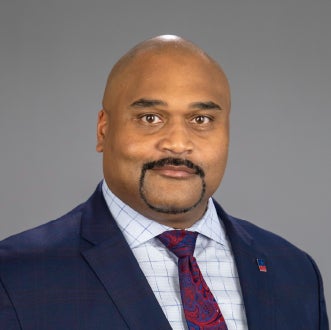Trustees As Advocates: Good Governance Requires Outreach
School boards across Texas know that good governance is at the heart of achieving excellent outcomes for their districts and students. But good governance isn’t limited to what happens within the boardroom. In fact, one of the most important roles trustees and boards have is that of advocate.
Because advocacy is so important, it is part of the State Board of Education’s Framework for School Board Development, which says that “the board promotes the vision and engages the community in developing and fulfilling the vision. The board advocates on behalf of Texas public schoolchildren.”
Traveling around the state and meeting with board members, I’ve seen the positive impact trustees and boards can have in their districts and communities, and with local and state policymakers. The outreach these board members undertake is critical for the future of public education in Texas.
What is Advocacy?
School trustees run for a seat on their local board because they are interested in what is happening in the district, which by default is a form of advocacy. But the SBOE Framework also provides guidance for boards, making plain what it is they should be doing to support advocacy and engagement efforts. Not surprisingly, advocacy and engagement go hand in hand and the Framework states that to take these actions, a board should do the following:
- Regularly report district progress to families and the community
- Build relationships with families, the community, and other district stakeholders, such as local businesses and nonprofits
- Engage and build collaborative relationships with government leaders
- Recognize the roles the Legislature, SBOE, and Texas Education Agency play, and provide input and feedback to them
- Promote school board service, sharing with the community the role of a school board and encouraging leadership opportunities
Taking these actions, trustees and boards will be working to influence and expand educational opportunities and experiences to meet the needs of Texas public school students. Hopefully, this multifaceted approach will also have an impact with decision-makers, ultimately benefiting Texas schoolchildren.
What Does Advocacy Look Like?
Being an effective advocate for the district and its students can be done in a variety of ways, from in-person meetings to sharing updates on social media. Meeting face to face — whenever possible — with state and federal legislators is beneficial, but when that isn’t an option, TASB is here to provide support through the School Board Advocacy Network, Texans for Strong Public Schools, Capitol Watch, and with the TASB Advocacy Agenda, which is created by school board members through a grassroots process that is finalized at Delegate Assembly.
Engaging and being transparent with community members is a critical part of board advocacy. The following are some options for outreach that trustees might consider:
- Town hall meetings
- Email updates or newsletters
- Social media posts
- Public meetings
Good News Matters
Once trustees have a plan to connect with stakeholders, they’ll want to think about what to share. Anyone who spends time in the classroom knows there are so many good things happening in schools, but often those stories don’t get told. It’s important to be transparent with your community, sharing your district’s challenges and needs while also highlighting what is going well, particularly regarding student achievement and successful academic programs.
While every board member may have a different approach to advocacy, each one has a responsibility to advocate on behalf of the district and its students. How that is done, how often, and to what level of involvement will depend on each trustee’s comfort level and time commitment. But at the end of the day, advocating becomes easier to do when you stay focused on the “why,” and the future of Texas students should always be that why.
Leadership TASB
Transform your leadership skills with TASB’s annual master class for board members.
In-District Consulting
When you need specialized training or project facilitation, our Board Development Services team can create specialized programming that meets your district’s needs.

Robert Long III
Robert Long III is the division director of Board Development Services. Long has worked at TASB since 2022. Before joining TASB, he was the senior regional advocacy director — West Houston — for Raise Your Hand Texas. He served as an elementary and middle school principal in Spring and Fort Bend ISDs. His experience also includes campus leadership positions in Cypress-Fairbanks and Aldine ISDs.
He earned his bachelor’s degree in interdisciplinary studies from Stephen F. Austin State University, a master’s degree in education administration and supervision from Sam Houston State University, and a doctorate in education administration from Texas A&M University. In 2017, he was named a semifinalist in the H-E-B Excellence in Education Awards, one of many honors Long has received.





